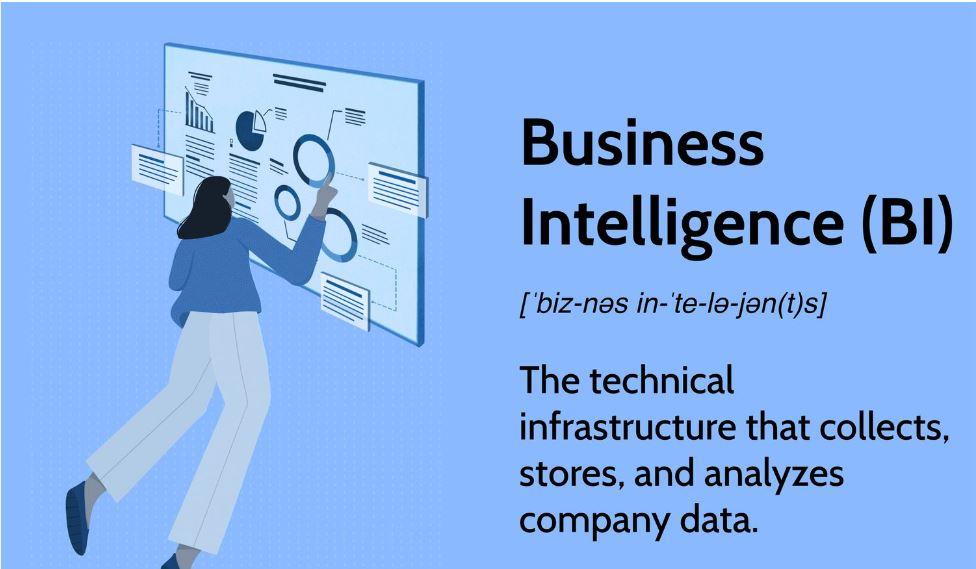In today's rapidly evolving business environment, making informed decisions is more crucial than ever. Companies that harness the power of data effectively often have a competitive edge. This is where business intelligence (BI) comes into play. By leveraging BI, organizations can transform raw data into actionable insights, driving better decision-making and fostering growth.
What is Business Intelligence?
Business intelligence is a technology-driven process that involves analyzing data and presenting actionable information. This enables executives, managers, and other corporate end-users to make informed business decisions. BI encompasses a wide range of tools, applications, and methodologies that allow organizations to collect data from internal systems and external sources, prepare it for analysis, and create reports, dashboards, and data visualizations.
The Importance of Business Intelligence
-
Data-Driven Decisions: At the core of BI is the ability to make data-driven decisions. Instead of relying on intuition or guesswork, businesses can base their strategies on real-time data. This reduces risks and increases the likelihood of success.
-
Improved Efficiency: Business intelligence tools automate data collection and analysis, reducing the time and effort required. This efficiency allows businesses to respond to market changes more swiftly.
-
Enhanced Customer Insights: Understanding customer behavior is essential for tailoring products and services. BI enables companies to analyze customer data, identifying trends and preferences, which can lead to more personalized offerings and increased customer satisfaction.
-
Competitive Advantage: In a competitive landscape, the ability to quickly access and analyze data gives businesses an edge. Business intelligence provides the insights needed to stay ahead of competitors, whether by identifying new market opportunities or optimizing existing operations.
Key Components of Business Intelligence
-
Data Warehousing: This involves collecting and storing data from various sources in a central repository. A data warehouse allows for efficient data retrieval and supports the complex queries necessary for BI analysis.
-
Data Mining: This process involves exploring large datasets to identify patterns and correlations. Data mining is essential for predictive analytics, enabling businesses to anticipate future trends and behaviors.
-
Reporting: BI reporting tools generate detailed reports that provide insights into various aspects of the business. These reports can be tailored to specific needs, such as sales performance, customer satisfaction, or operational efficiency.
-
Dashboards and Visualization: Visualization tools in BI present data in an easily understandable format, such as charts, graphs, and dashboards. This helps stakeholders quickly grasp complex information and make informed decisions.
Top Trends in Business Intelligence
-
Artificial Intelligence and Machine Learning: AI and ML are increasingly integrated into BI tools, allowing for more advanced data analysis and predictive capabilities. These technologies can uncover hidden patterns and provide deeper insights than traditional methods.
-
Self-Service BI: As the demand for data-driven decision-making grows, more businesses are adopting self-service BI tools. These platforms allow non-technical users to generate reports and insights without needing extensive IT support.
-
Mobile BI: With the rise of remote work and mobile devices, mobile BI is becoming more prevalent. It enables users to access and analyze data on the go, ensuring that decision-makers are always informed, regardless of location.
-
Data Governance: As data becomes a critical asset, ensuring its quality, security, and compliance is paramount. Effective data governance practices are becoming an integral part of BI strategies.
Implementing Business Intelligence in Your Organization
-
Identify Your Objectives: Before implementing BI, it's essential to define what you want to achieve. Whether it's improving operational efficiency, increasing sales, or enhancing customer service, having clear goals will guide your BI strategy.
-
Choose the Right Tools: There are numerous BI tools available, each with its strengths and weaknesses. Choose tools that align with your objectives and are compatible with your existing systems.
-
Data Integration: Ensure that your BI platform can integrate with all necessary data sources. This may involve connecting to databases, CRM systems, or external data feeds.
-
Training and Support: For BI to be effective, your team needs to understand how to use the tools and interpret the data. Provide adequate training and ongoing support to ensure a smooth implementation.
-
Monitor and Adjust: BI is not a set-it-and-forget-it solution. Continuously monitor the performance of your BI system and make adjustments as needed. This may involve refining data models, updating reports, or exploring new data sources.
Conclusion
Business intelligence is a powerful tool that can transform how businesses operate. By converting data into actionable insights, organizations can make better decisions, improve efficiency, and gain a competitive edge. As BI technology continues to evolve, staying informed about the latest trends and best practices will be key to maximizing its potential. Implementing a well-thought-out BI strategy will not only enhance decision-making but also drive long-term success in today's data-driven world.

